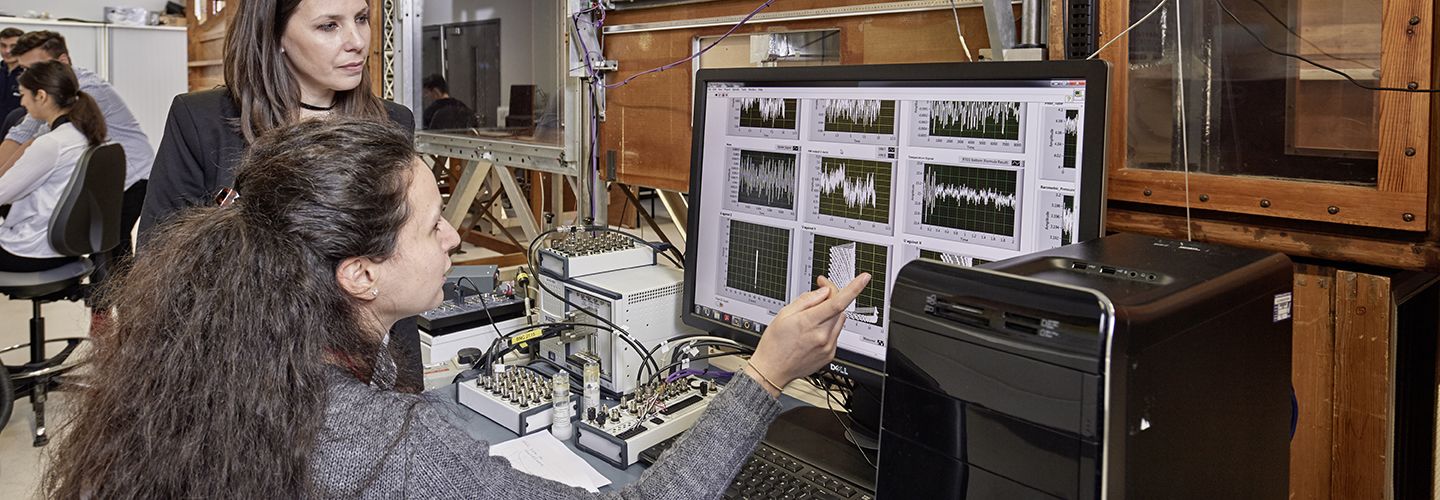Our research is driven by the passion to provide society with sustainable aviation and space exploration into the 21st Century so that through innovation and meeting emerging challenges, we can continue to benefit from associated world-class research.
City was a first University in the UK to teach aeronautics in 1909 (known then as the Northampton Institute) and that is reflected in the University still being one of the world’s top aviation groups (with circa 300 postgraduate students and 20 academic staff).
City’s historical pedigree is further enhanced by establishing one of the first world-class aerodynamic laboratories, named after Sir Frederick Handley Page who arrived as a lecturer in 1910.
Furthermore, the Northampton Institute was designated the Northampton College of Advanced Technology (CAT) in 1957 where Professor Grigori Tokaty taught and research in the Department of Aeronautics and Space Technology.
Focus
A primary focus is the provision of sustainable aviation, including commercial air travel and Advanced/Urban Air Mobility (A/UAM). This includes all relative areas of operations, integration and management of all associated technology and people involved in sustainable air transport provided with a minimal environmental impact.
The Aviation Research Group is also pioneering balanced approaches that also addresses the crucial contemporary challenges associated with green flight efficiency, through-life analysis and green maintenance, economics and cost, safety and security.
A further focus on nature-inspired flow optimization strategies and composite material design methodologies to improve the performance of aero-structures for civilian, unmanned aerial vehicles (UAV). This includes Advanced Design and Materials for aero-structures for civilian, unmanned aerial vehicle (UAV) applications.
We continue to develop nature-inspired flow optimization strategies and composite material design methodologies to improve their performance. The life-cycle design loop is closed back to sustainable aviation provision through health-monitoring and prognostic maintenance methods as well as self-healing technologies, while further being prepared for full digital manufacture and Product Life-Cycle Management (PLM).
The research in all aspects of space can by found in the London Space Innovation Centre.
Vision
We envision a holistic approach to developing sustainable aviation models and decision-making tools, using state-of-the-art experimental, numerical and theoretical tools, and ultimately working closely with aviation and space industry in high impact and state-of-the-art collaboration and future research excellence.
The Sustainable Aviation Research utilises all state-of-the-art technics such as big data, AI, Gaming Theory, Optimisation, Statistics and Stochastic modelling, simulation and virtual/augmented reality.
This modelling and too-development effort is supported by a simulation lab as part of the Handley Lab facilities; including a full A320 flight deck and a dynamic small aircraft simulator.
The Handley Lab also houses advanced optical flow measurement technologies (wall shear-stress sensors, volumetric flow diagnostics via 3-D PIV and BOS Schlieren) in our NWTF aerodynamic laboratories and purpose-built test-rigs, supported by Direct Numerical Simulation (DNS) and Large Eddy Simulation (LES) methods for simulating unsteady structural loads, aerodynamic performances and aeroacoustics.
Finally, parallel to the complimentary research routes that prioritize aviation transport operations and aerostructural design, we further develop methodologies to realize design development approaches and modifications via adaptive light-weight materials with sensory and self-healing functionality.
Applications
We envision breakthrough applications in technological areas we have demonstrated leadership, which are:
- sustainable flight operations
- through-life management and green maintenance
- Net Zero (2025)-prioritized aviation strategies
- nature-inspired flow optimization strategies
- sophisticated modern flow management and flow control systems relevant to aeronautical and aerospace industries
- testing adaptive materials and integrated sensor functionality under the condition of advanced digital manufacturing.
Research Groups
The Centre has three research groups:
- Sustainable Aviation Operations and Management
- Flow Control and Turbulence Group
- Advanced Composites Research Focused Group (CRFG).
Core researchers:
- Professor Richard Curran
- Professor Christoph Bruecker
- Dr Chetan Jagadeesh
- Dr Mohammad Omidyeganeh
- Professor Alfredo Pinelli
- Dr Sathiskumar Anusuya Ponnusami
- Professor Rajkumar Roy
Facilities
The centre has four wind tunnels, one water tunnel and two flight simulators; the latter including an A320 full flight deck and a dynamic small aircraft simulator. A supercomputer for numerical work is used to facilitate that research.
Aeronautics and Aerospace Research Centre website
Visit the Centre's research microsite for more information about the Centre, including areas of research, projects and related activities.
